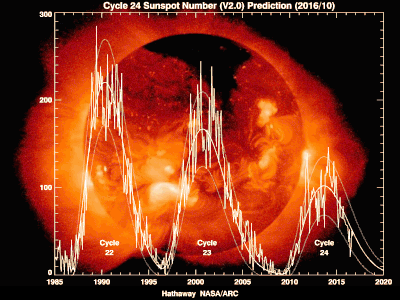
There are many factors that can affect our enjoyment of Ham Radio. Some annoyances may be only a few feet away, such as an electric lamp or computer causing RF interference in the shack. But when it comes to headaches for Ham Radio operators, especially HF enthusiasts, the biggest problem (literally) is 92.96 million miles away and is about as easy to negotiate with as your HOA’s rules committee. Of course we’re talking about the sun.
Generally speaking, a dearth of solar activity makes working the bands from 14-28 MHz (20 through 10 meters) and 50 MHz (6 meters) a challenge. The amount of sunspots, and correlating solar activity, decreases or increases according to a predictable 11-year cycle. The presence of sunspots indicates solar activity which affects the ionosphere’s ability to refract radio signals back to Earth. In the simplest terms, fewer sunspots means less solar activity, which leads to a heck of a lot of frustrated Hams.
As of this post, experts are predicting that the number of sunspots will reach its minimum in late 2019 or early 2020. The next cycle is expected to peak between 2023 and 2026.
For more information and daily space weather forecasts, visit the official website of Dr. Tamitha Skov, Space Weather Woman. Dr. Skov spent some time with Hams at DX Engineering’s booth at Dayton Hamvention 2019. Click here for part of her presentation at Hamvention 2019.
One way to endure this low point in solar activity is to shift gears to UHF/VHF operation, including contacting amateur radio satellites—check out this article on the basics of satellite operation. DX Engineering carries a number of HTs and mobile rigs, as well as the new ICOM IC-9700 VHF/UHF/1.2 GHz Transceiver, with special features including smooth satellite operation with normal/reverse tracking and 99 satellite channels.


Pingback: What Can Hams Expect from Solar Cycle 25? - Ham Radio News